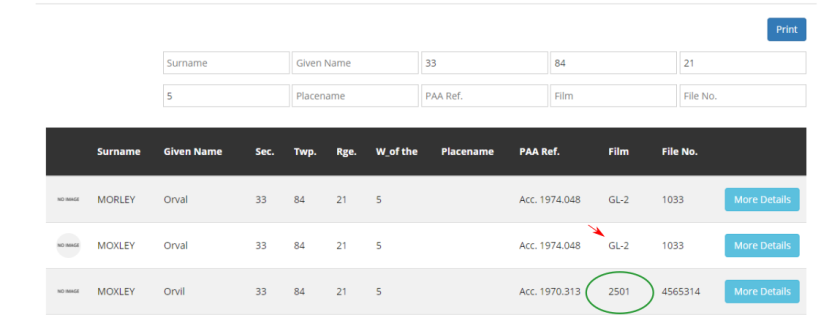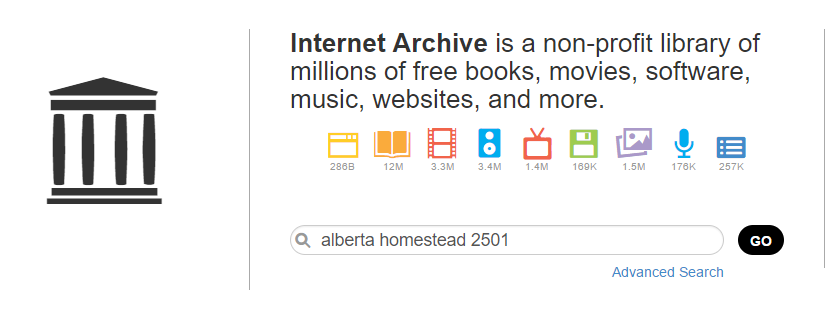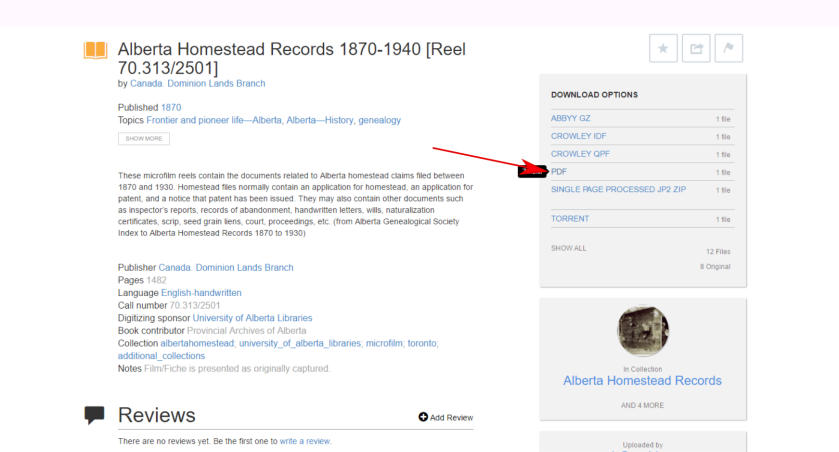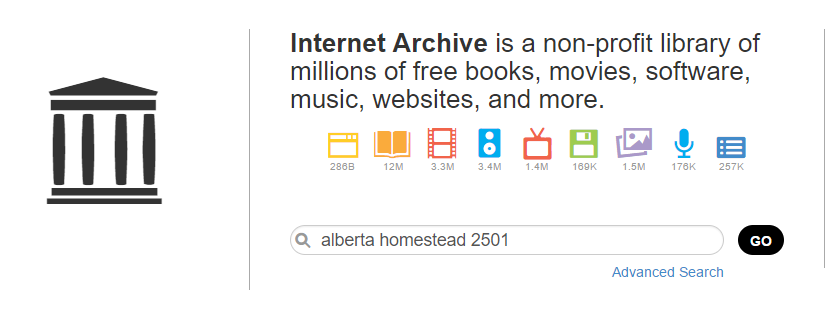Many people are interested in researching their family history and genealogy. The Index to Alberta Homestead Records are an excellent place to start your research. The following blog will give instructions on how to use the Index. If you wish to learn what the homestead records are, or how they can help archaeologists, please check out our previous posts.
The Index to Alberta Homestead Records 1870 to 1930 was a project created for the 100th anniversary of Alberta joining the confederacy. The members of the Alberta Genealogical Society and friends created an all name index to the homestead files to help researchers. There are 686 reels of microfilm that contain homestead records from 1870 to 1930. With this index, the researchers would be pointed to the exact reel and file number. For more information on this project or the Alberta Genealogical Society please visit their website (http://www.abgenealogy.ca/).
You can search the homestead record index by different methods including surname, legal description, or place name. Once you have that information either visit the Alberta Genealogical Society’s website and under resources click on Alberta Homestead Index then search the index or click on the following link: http://www.abgenealogy.ca/ab-homestead-index-page.
If you are doing research on your own family history, you can search by surname. When we were conducting research on the cabin that we found near Peace River, we searched the area by the legal land description.

Once you fill in the information you have, the search results will automatically appear. You can see part of our results below.

If you want to see the scanned microreel file of the homestead records, you will need to copy the film number and the file number. The film number for the homestead records only consists of numbers. The one we were searching for is circled in green. The red arrow is pointing to a different file type (grazing lease) and it consists of letters and numbers. Once you have the film and file number, go to https://archive.org/. In the search area type in Alberta homestead with the film number you wish to search for as we did below.
The reel with your homestead record should pop up. Click on the link (where the red arrow is pointing).

Then you can download it in the format that you wish. Personally I prefer downloading it as a PDF.
The next step is the longest part of the process. You will have to look though the reel until you find the file number associated with your previous search. This may take some time because reels can contain hundreds of files. As mentioned in the previous blog post, the file number is associated with a quarter section of land and the first page often contains the file number. If you searched by a person, you might find that the results will have multiple file numbers (maybe even on multiple reels), indicating claims on different sections.
If you are not able to do the research yourself, you are able to order the homestead records (or other research) from the Alberta Genealogical Society. Check out the following link for more information
http://www.abgenealogy.ca/content.php?nid=1550&mid=1155
The Alberta Homestead Index is a wonderful tool directing researchers to the required reel or reels. Before this index was created you can imagine how long it would take to search through all of the records. This is especially true when searching by surname since the only way to tell if someone tried to homestead multiple sections would have been to search though every single record. Thanks to the Alberta Genealogical Society this is no longer the case. Happy researching!

